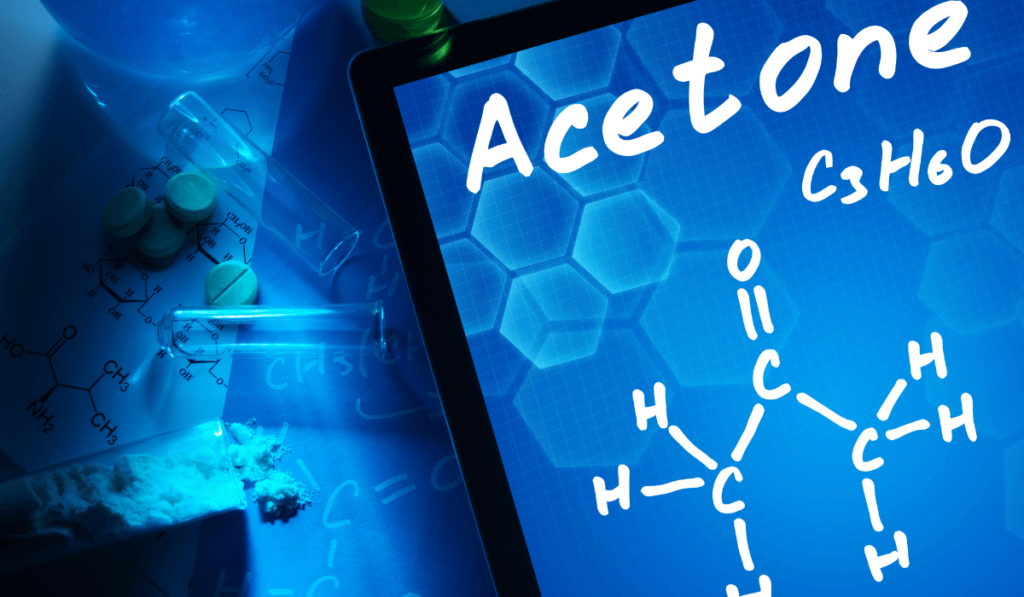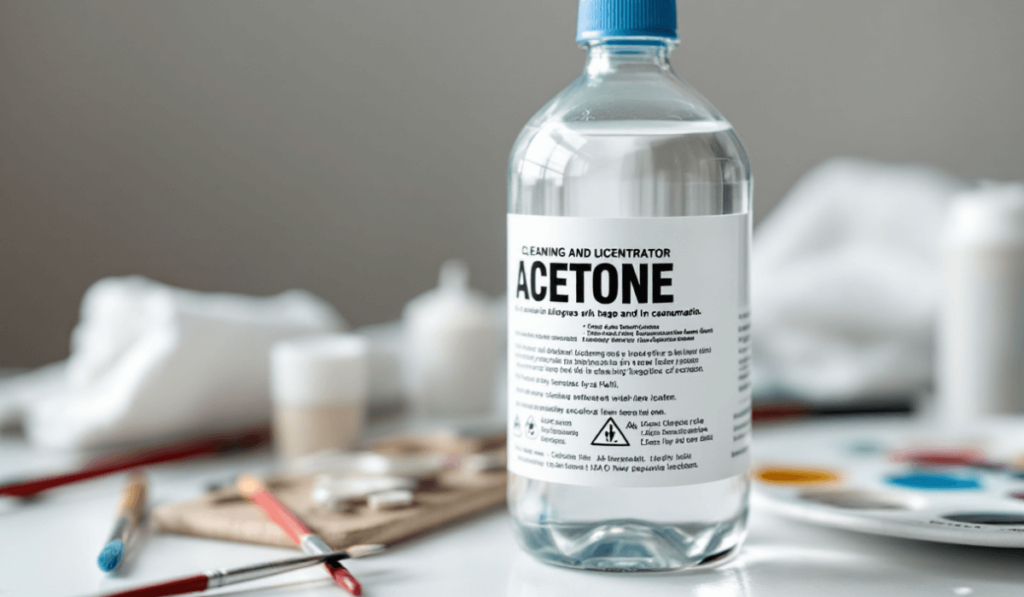The Essential Guide to Acetone: Benefits, Risks, and Safety Precautions
Acetone is a versatile chemical compound that plays a crucial role in both industrial applications and natural biological processes. While it’s commonly known as a powerful solvent in nail polish removers, its significance extends far beyond cosmetic uses. Are you curious about the safe handling of acetone or concerned about potential health risks? Whether you’re a professional working with this compound or a consumer using acetone-based products, understanding its properties is essential for your safety. In this comprehensive guide, we’ll explore: • The fundamental properties and applications of acetone • Health benefits and risks associated with exposure • Critical safety measures for handling and storage • Professional guidelines for workplace safety • Emergency procedures and first aid protocols Let’s dive deep into the world of acetone and equip you with the knowledge needed for safe, effective use of this important chemical compound.
Key Takeaways:
- – Acetone serves as more than just a nail polish remover – it’s a versatile solvent used in various industrial applications and occurs naturally in the body during ketogenic processes
- – Health considerations include both benefits (as part of ketone production during low-carb diets) and risks (potential nervous system effects from long-term exposure)
- – Safety measures are crucial when handling acetone, including proper ventilation, protective equipment, and storage requirements
- – Workplace safety protocols involve specific guidelines for handling large amounts, including local exhaust ventilation and suitable extinguishing media for emergencies
- – First aid procedures and emergency protocols are essential knowledge for anyone working with or regularly using acetone-based products
Chemical Properties and Composition

Physical Characteristics
Acetone stands as a fundamental organic compound with distinctive properties that make it invaluable in various applications. At its core, the acetone molecule consists of three carbon atoms, six hydrogen atoms, and one oxygen atom (C3H6O), forming the simplest ketone structure.
At room temperature, acetone exists as a colorless liquid with a characteristic sweet odour that many people can easily recognize. This volatile substance evaporates quickly when exposed to air, making it an excellent solvent for many applications. Its high volatility stems from its relatively low boiling point of 56.05°C (132.89°F).
The compound exhibits excellent solubility in water and can mix with most organic solvents, making it a versatile solution in both industrial and laboratory settings. Its molecular structure allows it to dissolve various substances effectively, from plastics to oils and resins.
One notable characteristic is its flammability – acetone has a low flash point of -20°C (-4°F), requiring careful handling and storage. The compound also features a relatively low density of 0.79 g/cm³, making it lighter than water.
💡 Key Takeaway: Acetone is a versatile organic compound characterized by its colorless appearance, sweet odour, high volatility, and excellent solvent properties, making it crucial for various applications while demanding careful handling.
Natural Occurrence in Human Body
The human body naturally produces acetone as part of its metabolic processes, particularly during specific physiological conditions. This organic compound plays a significant role in our body’s energy production systems, especially when glucose availability is limited.
Metabolism and Ketone Production
When our body cannot access sufficient glucose for energy, it switches to breaking down fats for fuel. This process triggers the production of ketones, including acetone, through a metabolic pathway known as ketogenesis. The ketogenic diet specifically leverages this natural process by restricting carbohydrates and forcing the body to rely on fat metabolism.
The hormone insulin plays a crucial role in regulating this process. When insulin levels are low, the body increases its production of ketone bodies, including β-hydroxybutyric acid and acetone. This natural adaptation helps ensure our organs, especially the brain, receive adequate energy even when glucose is scarce.
During periods of fasting, intense exercise, or when following a very low-carbohydrate diet, your body produces extra ketone bodies. This increased ketone production leads to higher levels of acetone in the blood and breath. Some people might notice a characteristic fruity breath odor during these times, which is actually due to the presence of acetone being expelled through respiration.
The liver is primarily responsible for ketone production, converting fatty acids into these essential energy molecules. While acetone is considered a waste product of this process, the other ketone bodies serve as valuable alternative fuel sources for various tissues in our body.
It’s important to note that while some level of ketone production is natural and beneficial, excessive amounts can indicate underlying health issues. Regular monitoring becomes especially crucial for individuals following a ketogenic diet or those with conditions affecting metabolism.
💡 Key Takeaway: The human body naturally produces acetone during fat metabolism, particularly when glucose is limited, with the process regulated by insulin and enhanced during ketogenic states or fasting periods.
Industrial and Commercial Applications

Cosmetic Industry Usage
Acetone stands as a cornerstone ingredient in the cosmetics industry, particularly renowned for its role as a nail polish remover. Its powerful solvent properties make it exceptionally effective at breaking down nail polish, making it the primary choice for nail care professionals and home users alike.
Beyond its function as a nail polish remover, acetone serves multiple purposes in cosmetic manufacturing. It acts as a crucial ingredient in the production of various beauty products, working alongside other compounds like acetic acid to create stable formulations. The chemical’s ability to dissolve other substances makes it invaluable in the development of cosmetic solutions and treatments.
In professional salon settings, acetone-based products are essential tools for nail technicians. These household products are specifically formulated to provide quick and effective removal of artificial nails, gel polishes, and traditional nail lacquers. The concentration of acetone in professional-grade products is typically higher than in consumer versions, allowing for more efficient service delivery.
Manufacturers also utilize acetone in the production of various cosmetic ingredients. Its role as a processing aid helps create stable emulsions and solutions that form the basis of many beauty products. The chemical’s unique properties enable it to facilitate the mixing of otherwise incompatible ingredients, resulting in consistent and effective formulations.
However, the cosmetic industry carefully controls acetone concentrations in final products to ensure safety and effectiveness. While pure acetone is commonly used in nail care, its presence in other cosmetic formulations is typically limited and precisely measured to maintain product stability and user safety.
💡 Key Takeaway: Acetone plays a vital role in the cosmetics industry, primarily as a nail polish remover and manufacturing aid, with carefully controlled concentrations ensuring both effectiveness and safety in various applications.
Health Impacts and Risks
Short-term Effects
Exposure to acetone can trigger immediate health impacts on the human body. When inhaled, it primarily affects the nervous system, causing symptoms like dizziness, headaches, and confusion. Direct skin contact may lead to irritation, redness, and a burning sensation.
High concentrations of acetone vapors can irritate the eyes, nose, and throat. Some individuals might experience nausea, vomiting, and shortness of breath. These symptoms typically subside once exposure stops, but prolonged contact can worsen the health condition.
Chronic Exposure Consequences
Long-term exposure to acetone poses more serious risks to human health. Regular contact with high concentrations can damage the liver and kidneys. Studies suggest potential links to reproductive toxicity, though more research is needed to establish definitive connections.
Pregnant women should exercise particular caution, as some research indicates that sustained exposure might increase the risk of birth defect. Workers in industries using acetone regularly should follow strict safety protocols to minimize exposure risks.
Prolonged exposure may also lead to chronic respiratory issues and persistent neurological symptoms. Some individuals might develop increased sensitivity to acetone over time, experiencing stronger reactions even at lower concentrations.
💡 Key Takeaway: Acetone exposure can cause immediate health effects like dizziness and skin irritation, while long-term exposure risks include organ damage and potential reproductive issues, making proper safety measures crucial.
Safe Handling and Storage
Emergency Response Measures
When handling acetone, it’s crucial to be prepared for potential emergencies. A well-planned response strategy can prevent serious accidents and protect both people and the environment. Keep dry chemical powder fire extinguishers readily available, as they’re most effective for acetone-related fires.
In case of spills, immediately evacuate the area and ensure proper local exhaust ventilation is functioning. For small spills, use absorbent materials like vermiculite or sand. Large spills require professional cleanup teams equipped with appropriate protective gear.
If skin contact occurs, remove contaminated clothing and wash the affected area thoroughly with soap and water for at least 15 minutes. For eye exposure, flush with clean water for a minimum of 20 minutes while holding eyelids open.
Storage Guidelines
Store acetone in a cool, well-ventilated area away from direct sunlight and heat sources. Use approved safety containers and keep them tightly sealed when not in use. For environmental protection, maintain secondary containment systems to prevent leaks from reaching soil or water sources.
Ensure storage areas have proper local exhaust ventilation systems to prevent vapor accumulation. Keep acetone away from incompatible materials like oxidizers and acids. Regular inspections of storage containers help identify potential leaks or damage early.
Maintain an organized storage system with clear labeling and safety data sheets readily accessible. Train all personnel on proper handling procedures and emergency protocols, including the location and use of dry chemical powder extinguishers and other safety equipment.
💡 Key Takeaway: Safe acetone handling requires proper emergency response preparation, adequate ventilation, appropriate storage conditions, and regular safety training to prevent accidents and protect both people and the environment.
Environmental Impact
Acetone’s presence in the environment requires careful consideration due to its potential harmful effect on ecosystems. While it naturally occurs in the environment through various processes, industrial releases demand strict monitoring and control measures.
When released into the air, acetone typically breaks down within several weeks through photochemical reactions. Its high water solubility means it can easily enter waterways, though it generally biodegrades rapidly without significant bioaccumulation in aquatic life.
Regulatory Guidelines
Countries with the highest production capacity of acetone have implemented stringent environmental protection measures. The U.S. Environmental Protection Agency classifies acetone as a volatile organic compound (VOC) and requires facilities to report releases exceeding specific thresholds.
Industries must follow strict disposal protocols to prevent soil and groundwater contamination. Many regions mandate the use of specialized containment systems and treatment facilities for acetone-containing waste. Regular environmental monitoring helps ensure compliance with established safety standards and minimizes potential ecological impacts.
Modern industrial practices focus on reducing acetone emissions through improved manufacturing processes and waste management systems. This includes implementing closed-loop systems and utilizing advanced air filtration technologies to capture and recycle acetone vapors.
💡 Key Takeaway: While acetone poses environmental concerns, its rapid biodegradation and strict regulatory oversight help minimize long-term ecological impact when properly managed according to established guidelines.
Conclusion
Understanding and respecting acetone’s dual nature as both a beneficial compound and potential hazard is crucial for its safe utilization. From its role in industrial applications to its presence in biological processes, acetone remains an indispensable substance in our daily lives. By following proper safety protocols, using appropriate protective equipment, and maintaining awareness of exposure limits, you can effectively harness its benefits while minimizing risks. Remember that whether you’re using acetone for nail polish removal, industrial cleaning, or working with it in a professional setting, knowledge is your best safety tool. Always store acetone in proper containers, ensure adequate ventilation, and keep it away from heat sources and incompatible materials. If you experience any adverse reactions or accidental exposure, don’t hesitate to seek immediate medical attention. Stay informed about product information, maintain proper safety measures, and regularly update your knowledge about handling organic compounds like acetone. Your safety and well-being are paramount when working with any chemical substance.
FAQs
What happens if acetone is accidentally ingested?
If acetone is accidentally swallowed, seek immediate medical attention. Symptoms may include nausea, vomiting, and stomach pain. Do not induce vomiting unless directed by medical professionals. Drink water to dilute the substance and contact poison control immediately.
Can acetone fumes affect pets in the house?
Yes, acetone fumes can be harmful to pets. Animals are more sensitive to chemical vapors than humans. Keep pets away from areas where acetone is being used, ensure proper ventilation, and store acetone products in pet-inaccessible locations to prevent exposure.
Does acetone have any effect on painted or varnished surfaces?
Acetone is a powerful solvent that can damage painted or varnished surfaces. It can dissolve many types of paint, varnish, and protective coatings. Always test on a small, inconspicuous area first and avoid direct contact with finished surfaces.
How long does acetone stay in the body after exposure?
The body typically eliminates acetone within 24-48 hours through breath and urine. However, the exact duration depends on factors like exposure level, individual metabolism, and overall health condition. The liver helps break down acetone efficiently.
Can pregnant women safely use acetone-based products?
Pregnant women should minimize exposure to acetone-based products due to potential risks. While occasional, brief exposure with proper ventilation is generally considered safe, prolonged exposure may pose risks. Consult healthcare providers for specific guidance during pregnancy.
Is acetone flammable at room temperature?
Yes, acetone is highly flammable at room temperature. It has a low flash point and can easily ignite when exposed to heat, sparks, or open flames. Always store acetone in a cool, well-ventilated area away from potential ignition sources and use appropriate safety measures.





Post Comment